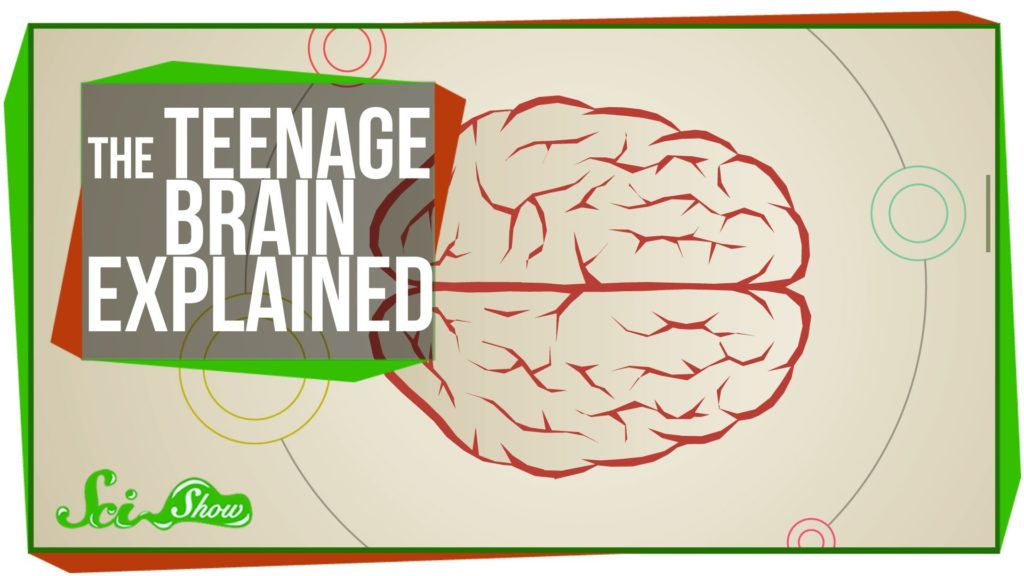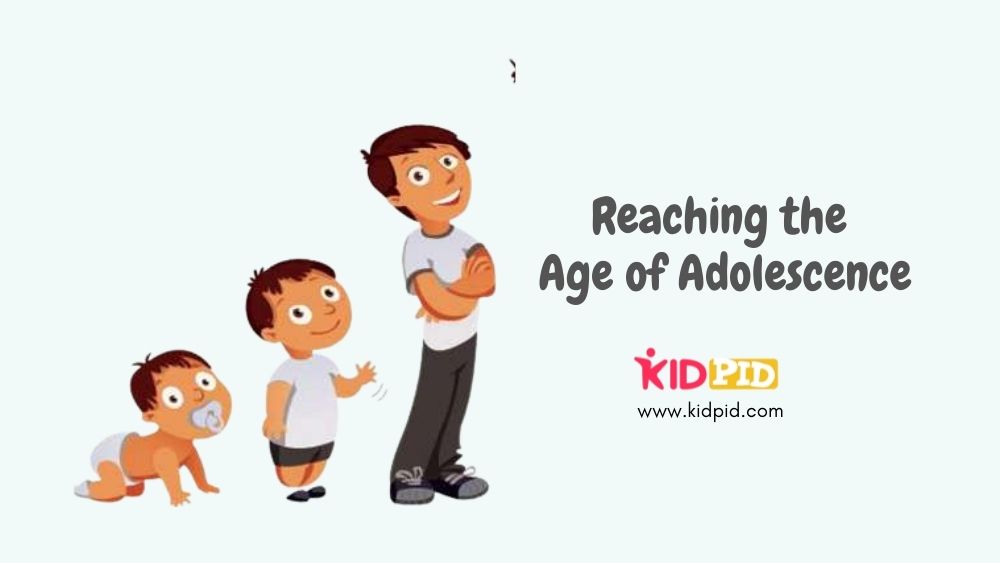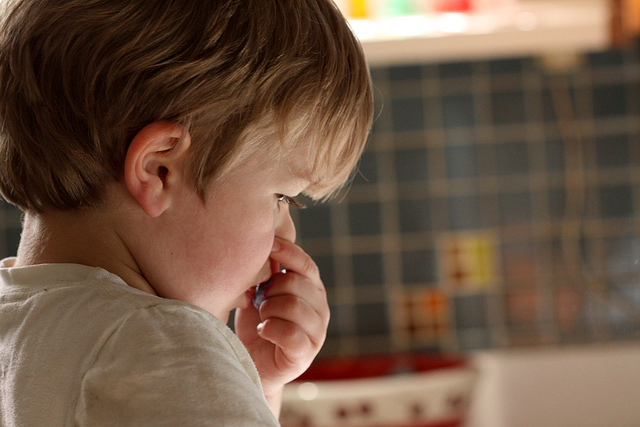The Teenage Brain Explained

or what turns you on, or whether you feel glum for no apparent reason Hormones keep your heart beating, and your body hydrated, and they make your organs grow, and make you grow bone, and muscle, and skin!
What people actually mean when they talk about ‘teenage hormones’, are sex hormones. And yes, puberty involves a whole series of sex hormones storms, the first of which actually kicks in before you’re outta Primary School. That’s when the Adrenal glands star secreting androgens, which triggers the growth in activity of the skin’s sebaceous glands, making skin more oily. Soon enough, more apocrine or sweat glands get activated increasing body odor. Then comes the waves of hormonal agents that start activating the gonads.
For boys, this influx of luteinizing hormones from the pituitary gland, get testosterone from the testes, and suddenly, that guy has up to fifty times more testosterone than he did before puberty. This also changes the shape of the male body, promoting hair growth, and building up lean muscle mass, just as the increased presence of estrogen in girls rearranges the deposition of their fats, stimulating the growth of breasts. Humans are actually lucky to experience the craziness of puberty only once, many other animals undergo multiple similarly intense hormonal rodeos as they enter sexually active periods, sometimes called the rot or heat, every new breeding season.
Some male species completely stop eating during their breeding period, because they’re just that sex crazed. And yet all that said, teen are far less ruled in their hormones than you might think. There are other factors that play here. For example, your favorite moody teen may be by turns punchy, angry, depressed, or in a zombie like fog, because of their chronic lack of sleep. Sleep is vital to everyone, but it’s specially important for kids and teens, because it’s during sleep that your pituitary gland releases an essential growth hormone, necessary for development.
A normal sleep cycle driven by circadian rhythm, is regulated by the daytime release of cortisol, which helps you wake up, and melatonin, which helps you wind down when it gets dark. But this biology of sleep timing changes as we age and as puberty begins, teens’ sleep clocks get pushed back. Most adults start producing melatonin 10 p.m. ish, but one study showed that teenagers don’t start producing melatonin until closer to 1am! This may be because puberty’s hormonal frenzy is stalling the release of melatonin, and could partly explain why so many teens stay up late, energized by the night, but had a really hard time rolling outta bed with the alarm. Of course it’s a bit of a chicken and egg deal, since watching reruns of The Simpsons, and playing Call o’ Duty late at night continues to stimulate the brain, which may further delay the release of melatonin.
Still, some researchers are starting to advocate for pushing back high school start times in the morning, in the hopes of having more focused students. So we’ve got sex hormones changing the bodies, and a lack o’ sleep to contend with, but increasing evidences suggest that, there is something much bigger at work that’s making teenagers so ‘teenager-ry’. Their brains! It turns out that brains actually take longer than we thought, to fully mature. I don’t mean physical size – our brains are already about 95% full-sized by the time we’re just six – but more in the sense of the connections inside the brain. Adults – for the most part – know how to make decisions by evaluating choices, and weighting consequences. They do this with their prefrontal cortex, which is responsible for controlling impulses and emotions, and forming judgments.
Its neurons chat with the neurons in other regions of the brain, responsible for – say it – memory or movement, through synapses. The thing is, teenage brains don’t quite work like this yet. The prefrontal cortex may not be fully developed until you’re mid-twenties, and teen synapses – those ”lines” of communication – are still growing, and specializing. They’re also – slow. As an adolescent brain keeps developing, its axons – the long ”tail-like” parts of the neurons that transmits signals to other neurons – become more and more insulated by a fatty layer called the ‘Myelin Sheath’.
This padding greatly increases the cell’s transmission speed, and while it helps adults make faster decisions, it isn’t fully formed in teens. These changes occur slowly, beginning at the back o’ the brain, where the oldest and most fundamental brain parts reside, and slowly working its way forward to the more advanced and complicated brain bits. The prefrontal cortex is the last to be hooked up and shaped. So it’s important to keep in mind, that just because your favorite teenager stayed up until sunrise binge-watching ‘The Walking Dead’ the night before an exam, it doesn’t mean they’re dumb or lazy, their brain are just literally finishing being built.
But at the same time, because all o’ this brain building’s just starting to peak, this is also, when the brain starts getting thinned out. You actually start losing connections that you don’t use enough, in a process called synaptic pruning – which has led to a theory that this is kind of a ‘use it or lose it’ phase. Meaning, adolescence could be an specially important time to use your brain – play an instrument; engage in sports; write poetry; learn language! Because by doing these things, you’re helping hardwire those synapses, and giving your brain topiary a lovely lasting shape. Whereas if you’re sitting around all day playing Candy Crush, those will be the connections that survive, which you don’t need… This shaping of the teen brain manifests itself in other ways too, like in teenage attitudes.
A group of scientist at the McLean Hospital of Massachusetts, once hooked up a group of adults and a group of teens, to MRI devices and then asked them to identify a series of expressions on photographs of adults faces. Interestingly, while adults correctly identified one expression as fear, the teenagers thought the faces showed anger, surprise, or shock. They weren’t registering subtleties well. Not only that, but the MRI images showed that adults and teens responded with different parts of their brains.
Adults, use the reasonable prefrontal cortex, while the teens mostly use the gut reaction, emotional amigdala, located farther back in the brain. Results like these might help explain why teenagers seem to experience frequent mood swings. For one, they tend to react quickly from the emotional part of their brain, without running those reactions by the more rational frontal cortex, and two, it could be that they’re just misreading expressions, and therefore the intentions behind them.
The frontal cortex also helps people relate to, and understand each other, and you can imagine what happens when concern is misjudged as anger; or worry, as disappointment. The Fresh Prince has an entire song about it. But the truth is, as much as parents just don’t understand, teens don’t always understand either. When the emotional amigdala, and the more rational cortex aren’t fully hooked up yet, that can make it hard for teenagers to productively work through emotions. This kind of reactionary, impulsive behavior may also lead to more risk taking.
Adolescence is the time when we’re most likely to experiment with whatever booze, or drugs is available, and unfortunately, it’s also the time our developing brains are most vulnerable to lasting effects Studies have shown that teens are more likely to become addicted to drugs and alcohol, than adults partly because their brains are more attuned to their reward centers. While the teenage prefrontal cortex is still developing, their ‘Nucleus Accumbens’, or ‘pleasure and reward zone’, forms early on.
Neuroimaging studies have shown that when presented with a big potential reward, teen brains light up way more than kids or adults brains, but if the reward was small, teen brains hardly fired at all. So basically, give an adolescent a pat on the back, and you’ll get a shrug. Give them a hot date or a wining goal, and their brains light up like Vegas. This of course, does not always result in great judgment. A jacked up thrill-seeking impulse, combined with exquisite pang of peer pressure, plus a new driver’s license, new sex parts, and access to substances can lead to some not good results.
But still, this long and some times tedious remodeling process that our bodies go through in the teenage years, isn’t all that. Many scientists have pointed out that our delayed adolescence lets our brains keep their flexibility longer, which Yeah, may make teens a little slow, but also more adaptable, as they prepare for the adult world. In this way, you can see teen impulsiveness as boldness; or independent thinking, and moodiness, as a source of new found empathy; and excitability, as passion.
Read More
- A poetic experiment: Walt Whitman, interpreted by three animator
- Could we actually live on Mars?
- Why do some people go bald?
- How false news can spread
- How smart are dolphins?






Responses